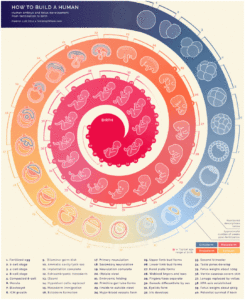As Social Media Day crept up, we went time-traveling through our own channels, in awe at our glow-up in sync with the latest trends & best practices. One major transformation? Infographics!
Infographics have undergone significant transformations over the years, adapting to the changing landscape of technology and user preferences. Let’s dive into the most significant transformations we’ve witnessed in infographics and one of our favorite topics: social media!
Simplicity
Infographics have become increasingly focused on simplicity and clarity of information presentation. Early infographics often featured complex visuals and overwhelming amounts of data. However, modern infographics prioritize minimalism, using concise text, clean designs, and intuitive layouts to convey information efficiently while also making it easier for the viewer to digest.
Mobile optimization
With the evolution of smartphones and tablets, infographics evolved to be mobile-friendly. Due to limited screen space, infographics went vertical! This allows users to view the information easily on small screens while also having a touch-friendly experience.
Interactivity
Interactivity has played a significant role in enhancing user engagement with infographics. Rather than static images, modern infographics often incorporate interactive elements, such as clickable links, animations, and videos, boosting share-ability and user engagement. These features enable users to explore the content at their own pace, delve deeper into specific data points, and interact with the information in a more immersive manner.
Platform-specific Designs
As infographics have expanded across various digital platforms, designers now create platform-specific designs. Infographics tailored for social media platforms, websites, or presentations consider each medium’s specific requirements and constraints. For example, Instagram loves eye candy, while Twitter craves concise messaging. Knowing how to optimize your infographic on different platforms is becoming increasingly important for getting the best engagement.
Data Visualization
Over the years, infographics have become more sophisticated in their data visualization techniques. Early infographics often relied on basic bar charts or pie graphs. However, with the advancement of technology and data analysis tools, designers now employ a wide range of visualization methods, including interactive maps, heat-maps, tree-maps, network diagrams, and more. These visually appealing representations help to convey complex information effectively and engage the audience.
Storytelling
Infographics have evolved to incorporate storytelling elements, weaving narratives around the data they present. Instead of merely displaying facts and figures, modern infographics aim to contextualize information, highlight key insights, and guide users through a coherent storyline. By combining data with compelling visuals and narrative structures, infographics can convey information in a memorable and impactful way.






